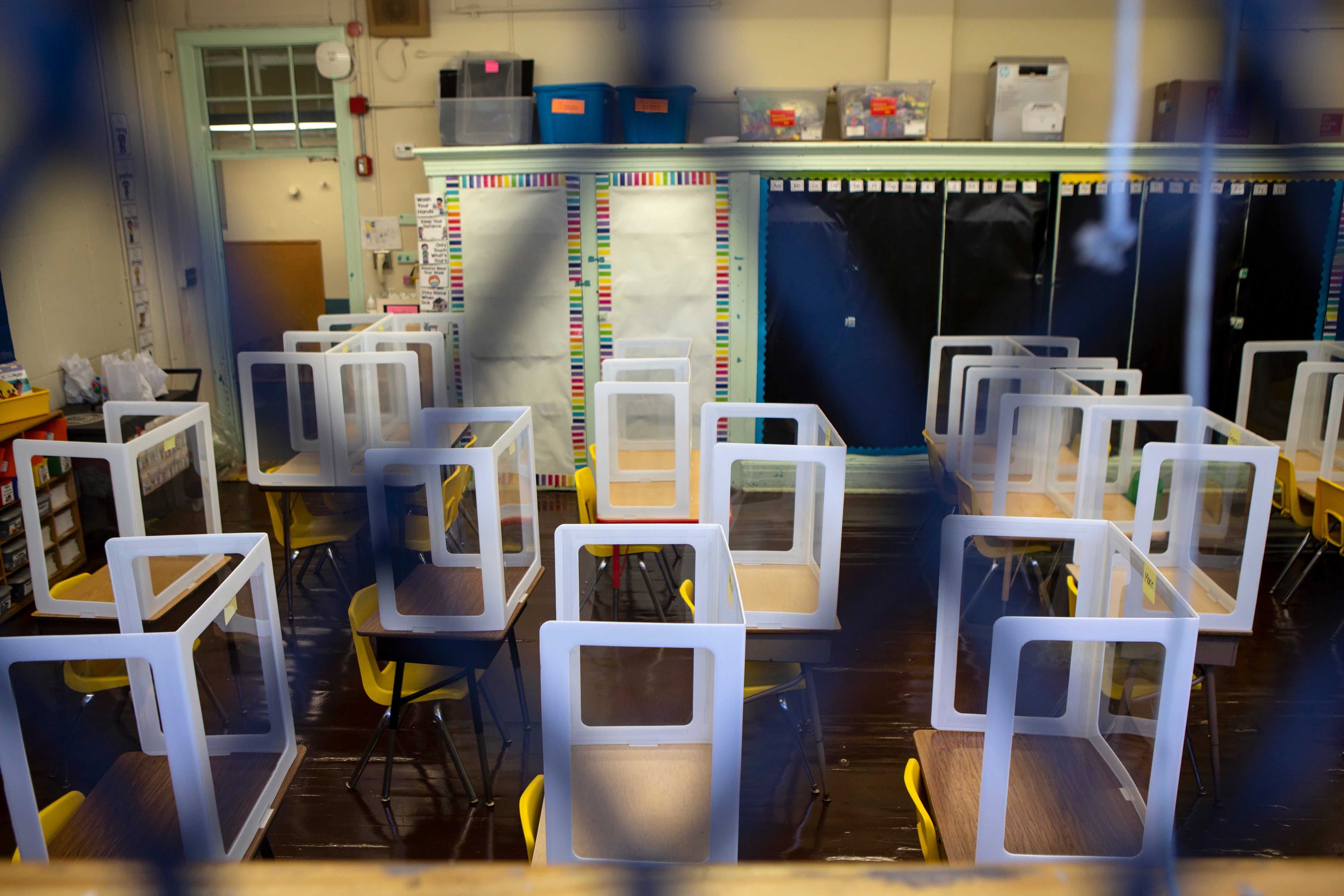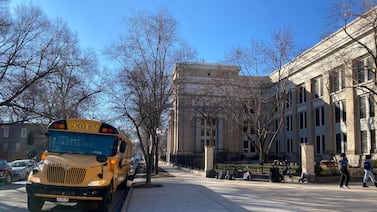Sign up for Chalkbeat Newark’s free newsletter to keep up with the city’s public school system.
New Jersey students are missing more school than before the COVID-19 pandemic, according to statewide data released Wednesday.
The rate of chronic absenteeism, defined as missing 10% or more of the school year, rose to 16.6% in the 2022-23 school year. That’s up from 10.6% before the pandemic. Rates are higher for students belonging to marginalized groups, such as students who are Black, Hispanic, nonbinary, economically disadvantaged, English learners, and students with disabilities. Homeless students have the highest rate of chronic absenteeism at 41.3%, followed by students in foster care at 27.3%.
The previous school year’s rate is a slight improvement from 2021-22 when 18.1% of students were chronically absent.
“Even though it’s an improvement, I say the house is on fire here when you have that percentage of students missing 18 days or more,” said State Board of Education member Nedd Johnson. “If they’re not there, you can’t teach them. They can’t learn.”
New Jersey and national trends
The increase in chronic absenteeism in New Jersey is part of a national trend. Nationwide, chronic absenteeism climbed from 15% in 2018-19 to 26% in 2022-23, according to data compiled by the American Enterprise Institute. Based on states that have reported data for the previous school year, New Jersey has the lowest rate in the country.
Members of the state Board of Education and Education Department staff said there is still work to be done despite New Jersey’s high performance compared to other states. More than one-fifth of New Jersey students missed more than 15 days of school in the 2022-23 school year.
The increase in absenteeism in New Jersey could be a result of more students staying home in the event of sickness or exposure to COVID-19, according to the state Department of Education. Root causes of chronic absenteeism can vary by district, school, and student, Assistant Commissioner of Education Kathleen Ehling said.
Getting to root causes
Those root causes for absenteeism typically fall into four categories: barriers to attendance, aversion to school, disengagement from school, and misconceptions about the impact of absences, according to the nonprofit initiative Attendance Works. Specific causes could include family responsibilities, anxiety, lack of academic support, and assuming attendance only matters in older grades.
Every district with a chronic absenteeism rate of 10% or higher is required to develop a corrective action plan to improve attendance. In 2023, over 70% of schools met this threshold, compared with 32% in 2019.
Developing the plan involves identifying barriers to school attendance and developing recommendations to address them, according to department officials. School leaders are instructed to study the root causes of absenteeism in their community and proactively address them. Districts with corrective action plans receive ongoing support from the executive county superintendent and county education specialist.
At the state level, the Education Department said it’s working to ensure schools are safe and supportive, officials said. Ehling pointed to mental health as a potential contributing factor to chronic absenteeism, noting that anxiety and depression are “alarmingly high” among students.
In Newark, the state’s largest district, 12.7% of students were chronically absent last school year. In Millburn, one of the state’s wealthiest districts, only 8.8% of students were chronically absent. The rate climbed to 14.3% for economically disadvantaged students. In Toms River, 21.7% of students were chronically absent.
Some school districts saw rates greater than 40%, such as Camden at 40.7% and Trenton at 42.2%.
COVID-related trauma
Board member Mary Bennett said many students experienced trauma during the pandemic, which has made them disaffected with school.
“We have to look and try to urge the districts to be very holistic and extremely diligent because the young people are not well, in some instances the families are not well,” Bennett said.
The department has launched a web page with resources districts can use to address chronic absenteeism in their communities, including information on data-based decision making to deal with absenteeism and sample corrective action plans. An attendance toolkit and awareness campaign resources will be released soon, according to the website.
Hannah Gross covers education and child welfare for NJ Spotlight News via a partnership with Report for America. She covers the full spectrum of education and children’s services in New Jersey and looks especially through the lens of equity and opportunity. This story was first published on NJ Spotlight News, a content partner of Chalkbeat Newark.







